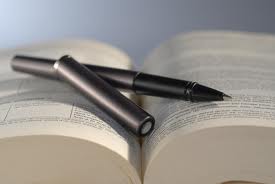Who Are Editors and What Are They Good For?
Biff Barnes
“Who are editors and what are they good for?” asks Anita Roy, a senior editor a Zubaan Books and associate editor of Geo magazine, in an article in Himal Southasian.
Gary Kamiya, executive editor of the online magazine salon.com, answered the question with a list: “Editors are craftsmen, ghosts, psychiatrists, bullies, sparring partners, experts, enablers, ignoramuses, translators, writers, goalies, friends, foremen, wimps, ditch diggers, mind readers, coaches, bomb throwers, muses and spittoons – sometimes all while working on the same piece.”

“But,” says Roy, “I would like to add one more to the list: editors are diamond-cutters. This might sound rather high-falutin’, but once I started thinking about it, I realised that this is a metaphor with many facets (geddit?).”
In exploring her metaphor of the editor as diamond cutter, Roy creates a list of the aspects of the craft of editing. Here are some excerpts from the list.
Sparkling Prose
“Handed a raw lump of text, editors shave down, hone, cut and chisel away in the belief that what the material loses in size, it will gain in value. The gem-cutter’s art is all about shaving away the excess such that the light will shine through.”
“There is many a slip between [an author’s] intention and execution, and an editor’s job is to make the transition smooth – whether that means correcting a typo, reordering a sentence, resequencing an argument or restructuring an entire book.’
It Takes One to Know One
“Likewise, the editor and the writer are both chips off the same block ... An editor might, or might not, do a lot of writing, but a writer does an awful lot of editing. Writing and editing, like love and marriage, go together like horse and carriage: they are the yin and yang of language, the art and craft, the heart and mind, the food and cuisine.
Working together on a piece of writing is well-nigh impossible unless the editor and author share some kind of affinity.
The Kindest Cut
“Like diamond-cutters, good editors know when to stop…Understanding and working empathetically with the text is similar to a diamond-cutter’s understanding of the crystalline structure of his gem.”
Panning for Gold
“A large part of what editors do is, like prospectors, pan for gold. It is dirty, thankless work and ruins your fingernails, but you are driven on by the dream that somewhere, in amongst the silt and rubble…, there lurks the gleam of genius.”
Editor’s Anonymous
“It is the editor’s duty, destiny, dharma to become and remain invisible.”
“.. editors are also, generally, underpaid skilled workers, the value of whose time and labour is drastically disproportionate to the material on which they work.”
Pig’s Ears
“There are those authors who think that each of their words is a gem, and that their editor’s only role is to periodically remind the author of how incredibly gracious he … is to have chosen her …before whom to cast his pearls. But, occasionally, as every editor knows, you cannot make a silk purse from a sow’s ear and not every text is a diamond in the rough…[In that case the editor might] recommend that the author gets in touch with one of your colleagues in another publishing house, oh, and here is her e-mail ID …”
Setting the Setting
“The job of editing does not stop with shaping and fashioning the text until it achieves a jewel-like brightness and luminosity….[Ultimately]the editor becomes like a jeweler, and has to take decisions about how best to display their writers’ work to the buying public. Decisions to do with the cover, the typeface, the format, the title, the ‘feel’ of the book are all crucial to its eventual success or failure.”